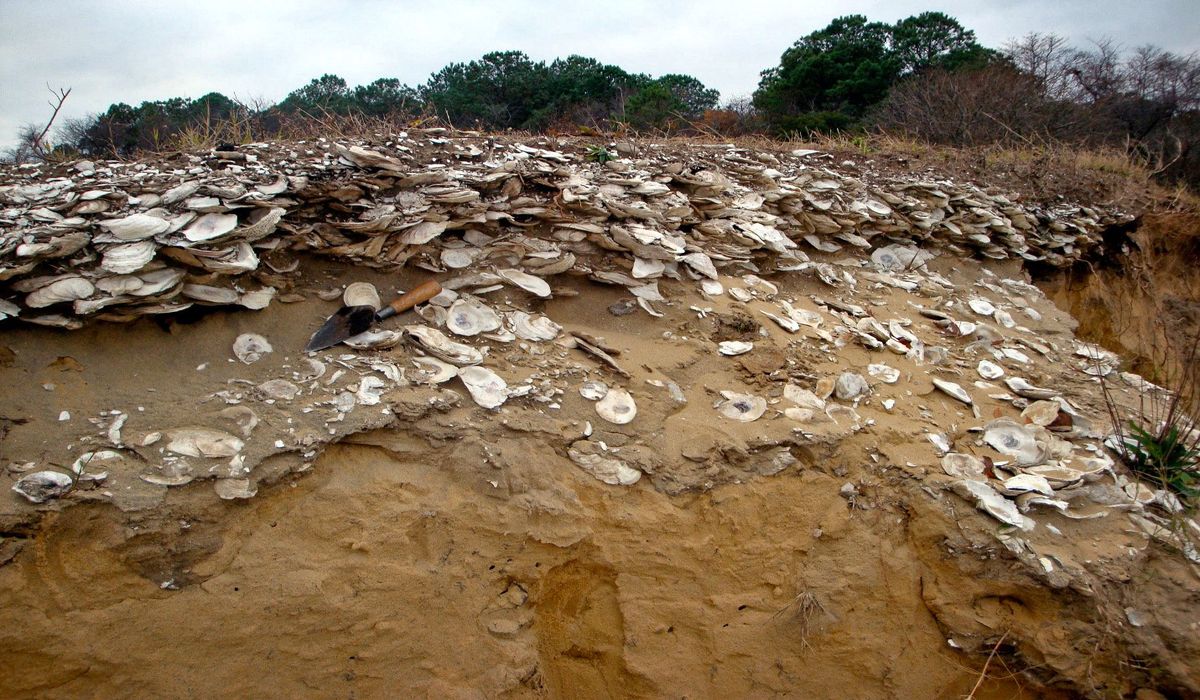Secrets Of Delaware’s Ancient Shell Middens

Have you ever wondered about the hidden history of Delaware? One fascinating aspect is the ancient shell middens scattered across the state. These piles of shells, bones, and artifacts tell stories of the Native American tribes who lived here thousands of years ago. Imagine walking through a forest and stumbling upon a mound filled with oyster shells. These middens are not just heaps of refuse; they are historical records. They reveal what people ate, how they lived, and even their social structures. If you love history and nature, exploring these ancient sites offers a unique glimpse into Delaware's past.
Discovering Delaware's Ancient Shell Middens
Delaware's ancient shell middens hold secrets of the past, revealing the lives of the Native American tribes who once thrived here. These archaeological sites, filled with shells, bones, and artifacts, offer a glimpse into their daily lives and traditions. Let's explore some of the most fascinating shell middens in Delaware.
1. Wolfe Neck Site
Located near Rehoboth Bay, the Wolfe Neck Site is one of Delaware's most significant shell middens. This site provides a wealth of information about the region's prehistoric inhabitants.
- Historical Significance: The Wolfe Neck Site dates back over 1,000 years, offering insights into the diet and lifestyle of the area's early residents.
- Artifacts Found: Archaeologists have uncovered pottery shards, stone tools, and animal bones, painting a vivid picture of the past.
- Visitor Experience: While the site itself isn't open to the public, nearby parks and trails offer a chance to explore the natural beauty of the area.
2. Island Field Site
The Island Field Site, located near the Delaware River, is another important shell midden. This site has provided valuable information about the region's prehistoric cultures.
- Historical Context: The Island Field Site dates back to the Woodland period, around 500 B.C. to A.D. 1000.
- Artifacts and Findings: Excavations have revealed shellfish remains, pottery, and tools, shedding light on the daily lives of the site's inhabitants.
- Accessibility: While the site itself is not accessible to the public, nearby historical markers provide information about its significance.
3. Carey Farm Site
Situated near the Nanticoke River, the Carey Farm Site is a well-preserved shell midden that offers a glimpse into the past.
- Historical Importance: This site dates back to the Late Archaic period, around 3000 to 1000 B.C.
- Discoveries: Archaeologists have found a variety of artifacts, including projectile points, pottery, and shellfish remains.
- Visiting the Area: The site is not open to the public, but nearby parks and nature reserves offer opportunities for outdoor activities and exploration.
4. Puncheon Run Site
Located near Dover, the Puncheon Run Site is a significant shell midden that has provided valuable insights into Delaware's prehistoric cultures.
- Historical Background: The Puncheon Run Site dates back to the Woodland period, around 1000 B.C. to A.D. 1600.
- Artifacts Unearthed: Excavations have uncovered pottery, stone tools, and animal bones, offering a glimpse into the daily lives of the site's inhabitants.
- Public Access: While the site itself is not open to the public, nearby historical sites and museums provide information about the region's history.
5. Hell Island Site
The Hell Island Site, located near the Delaware Bay, is another important shell midden that offers a window into the past.
- Historical Relevance: This site dates back to the Woodland period, around 1000 B.C. to A.D. 1600.
- Findings: Archaeologists have discovered shellfish remains, pottery, and tools, providing valuable information about the site's inhabitants.
- Exploring the Area: While the site itself is not accessible to the public, nearby parks and nature reserves offer opportunities for outdoor activities and exploration.
6. Slaughter Creek Site
Situated near the Nanticoke River, the Slaughter Creek Site is a well-preserved shell midden that offers a glimpse into the past.
- Historical Significance: This site dates back to the Late Archaic period, around 3000 to 1000 B.C.
- Artifacts Found: Archaeologists have uncovered a variety of artifacts, including projectile points, pottery, and shellfish remains.
- Visitor Experience: The site is not open to the public, but nearby parks and nature reserves offer opportunities for outdoor activities and exploration.
7. Rehoboth Bay Site
Located near Rehoboth Bay, the Rehoboth Bay Site is a significant shell midden that has provided valuable insights into Delaware's prehistoric cultures.
- Historical Context: The Rehoboth Bay Site dates back to the Woodland period, around 1000 B.C. to A.D. 1600.
- Artifacts and Findings: Excavations have revealed shellfish remains, pottery, and tools, shedding light on the daily lives of the site's inhabitants.
- Accessibility: While the site itself is not accessible to the public, nearby historical markers provide information about its significance.
Discovering Delaware's Hidden History
Delaware's ancient shell middens offer a unique glimpse into the past. These archaeological sites reveal how early inhabitants lived, what they ate, and how they interacted with their environment. Exploring these middens helps us understand the region's history and the people who once called it home. Visiting these sites can be a fascinating experience for history buffs, nature lovers, and curious minds alike. Whether you're hiking through a state park or visiting a museum exhibit, the stories told by these ancient piles of shells are captivating. So next time you're in Delaware, take a moment to appreciate these hidden historical treasures. They are not just piles of shells; they are windows into a world long gone, yet still very much a part of our shared heritage.

